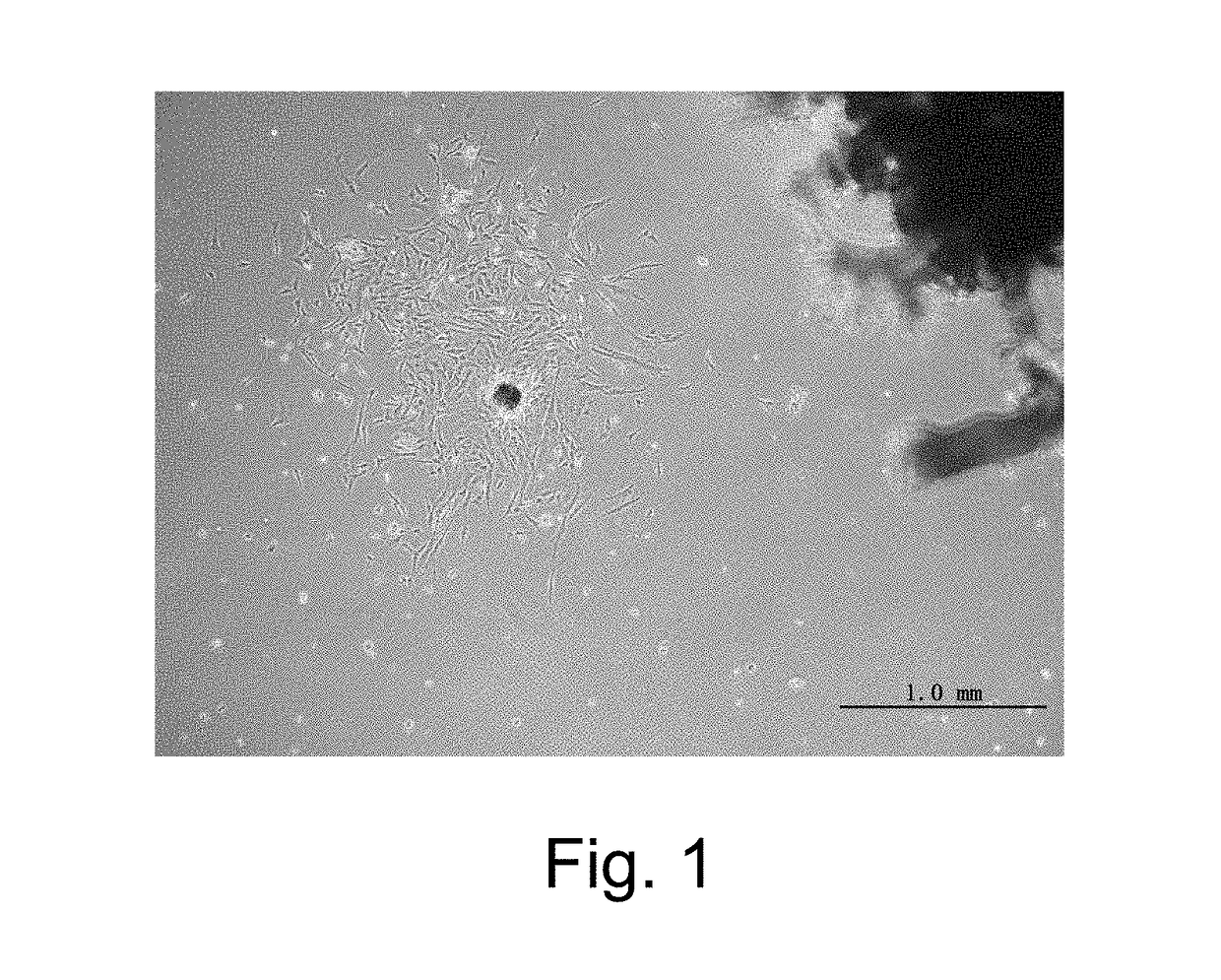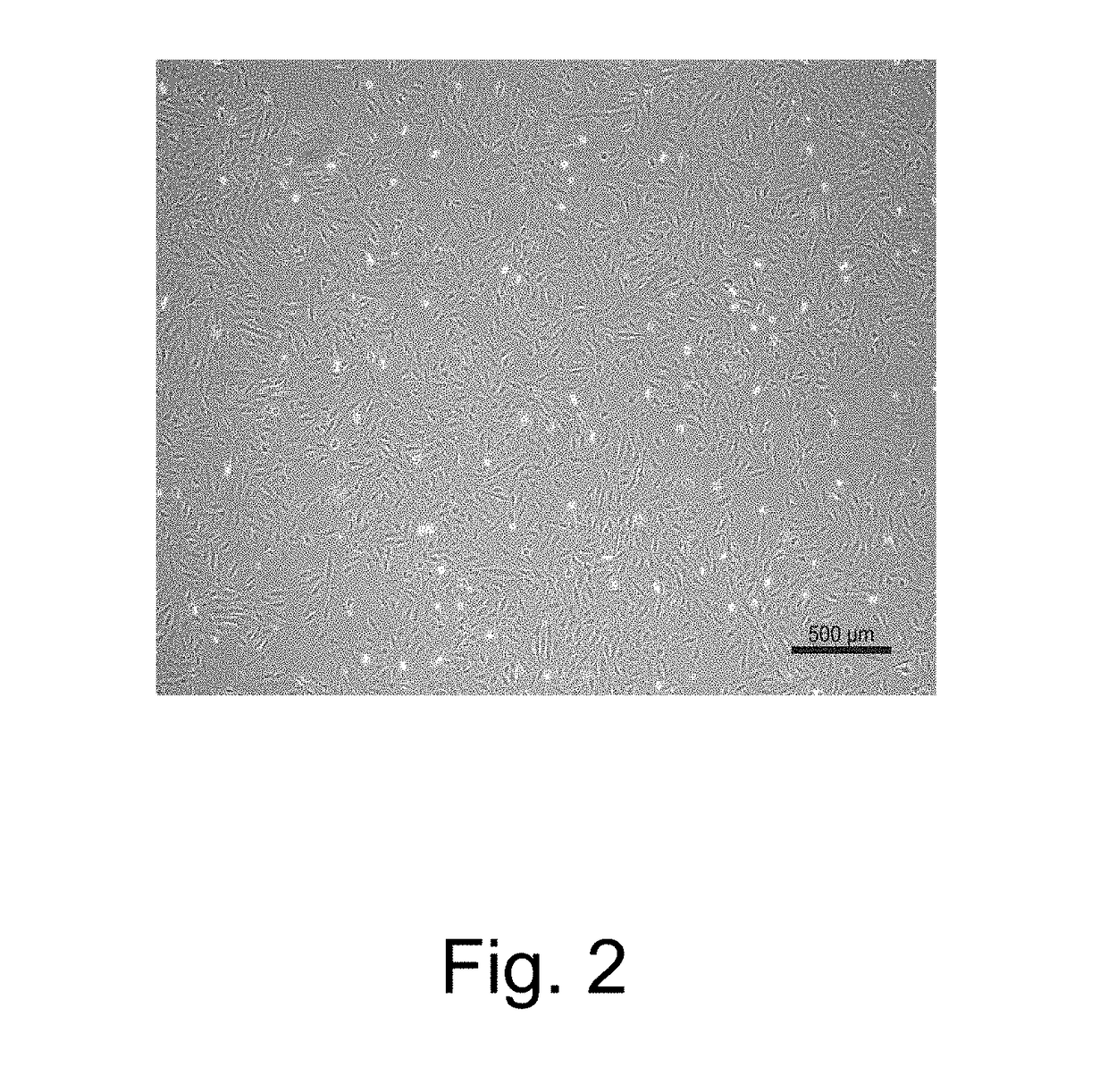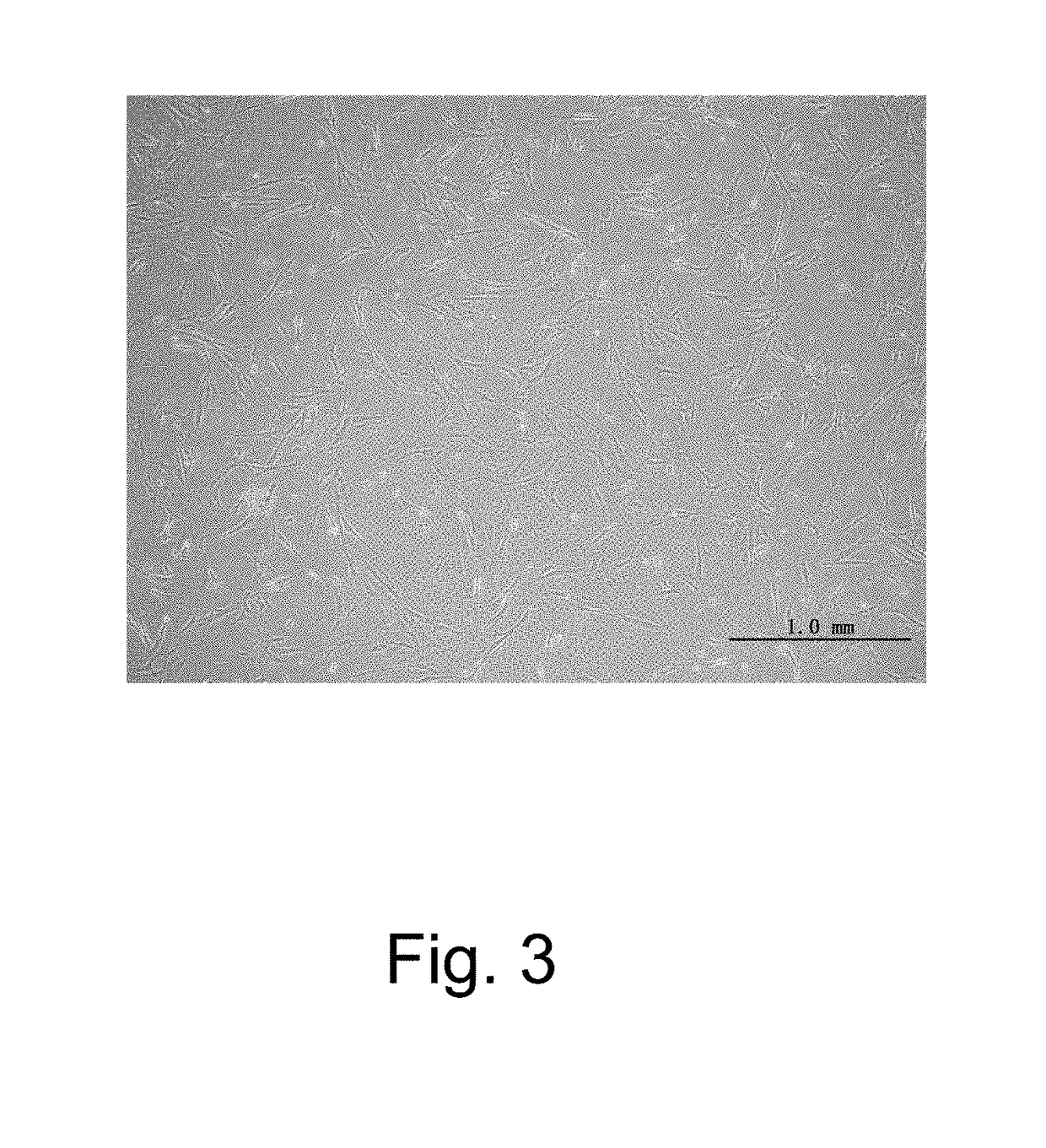Placenta-derived potential cells and preparing method thereof
a potential cell and placenta technology, applied in the field of cell with potential, can solve the problems of limited in-vitro stem cell culture technology, cell deterioration and death, and loss of defense capability against microorganisms and toxic substances, so as to prevent the occurrence of tissue and organ diseases, maintain the balance of life organs, and improve the effect of cell survival
- Summary
- Abstract
- Description
- Claims
- Application Information
AI Technical Summary
Benefits of technology
Problems solved by technology
Method used
Image
Examples
embodiment 1
Culturing Human Placental Cells in Vitro
[0116]Human placenta is obtained and then performing steps as follows:
[0117]continuously washing the placental tissue with 4° C. pre-cooled phosphate buffer (PBS) containing penicillin and streptomycin for at least 3 times;
[0118]cutting the big block of placental tissue into minimal organ type explants with a size at 2 mm×2 mm×2 mm; and then washing with the 4° C. pre-cooled phosphate buffer (PBS) containing penicillin and streptomycin for at least 2 times;
[0119]sending the placental tissue into 0.25% neutral protease solution or 1% collagenase solution which is prepared by a bacterial PBS for digestion, wherein conditions are 37° C. constant temperature oscillation for 1 hours; and then performing steps as follows:
[0120]repeatedly blowing and beating the minimal organ type explants with a sampler or a straw; or pouring the minimal organ type explants and the neutral protease solution or collagenase solution which is prepared by a bacterial PB...
embodiment 2
[0133]Formation of Adipose Tissue, Induction and Differentiation of Bone and Cartilage
[0134]Referring to FIG. 3, continuously culture placental cells in the experimental group, continuously add three inducers of bone, cartilage and fat, two weeks later, adipose tissue, bone and cartilage are formed. See FIG. 4-5, respectively using different staining method, bone, cartilage, adipose tissue are formed under the microscope.
embodiment 3
[0135]Identification of Cell Surface Markers
[0136]Referring to FIG. 7, the control group and the experimental group were set up in the same manner as in Example 1, and the substance of the present invention is not added to the control group. After 30 days of culture, cell surface markers were determined by flow cytometry. Referring to FIGS. 7A-7I, the experimental results are shown as below.
[0137]FIG. 7A shows CD90>95%, FIG. 7B shows CD3495%, FIG. 7G shows CD3195%, FIG. 7I shows HLA-DR<2%. The experimental group expresses CD90, CD73 and CD105 and CD45, CD14 and HLA-DR are not expressed. The control group do not express any of them.
PUM
| Property | Measurement | Unit |
|---|---|---|
| temperature | aaaaa | aaaaa |
| size | aaaaa | aaaaa |
| constant temperature | aaaaa | aaaaa |
Abstract
Description
Claims
Application Information
 Login to View More
Login to View More - R&D
- Intellectual Property
- Life Sciences
- Materials
- Tech Scout
- Unparalleled Data Quality
- Higher Quality Content
- 60% Fewer Hallucinations
Browse by: Latest US Patents, China's latest patents, Technical Efficacy Thesaurus, Application Domain, Technology Topic, Popular Technical Reports.
© 2025 PatSnap. All rights reserved.Legal|Privacy policy|Modern Slavery Act Transparency Statement|Sitemap|About US| Contact US: help@patsnap.com



